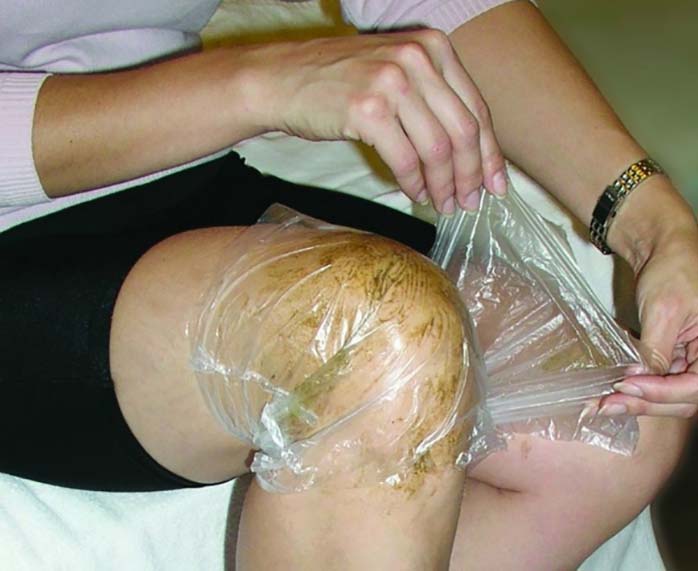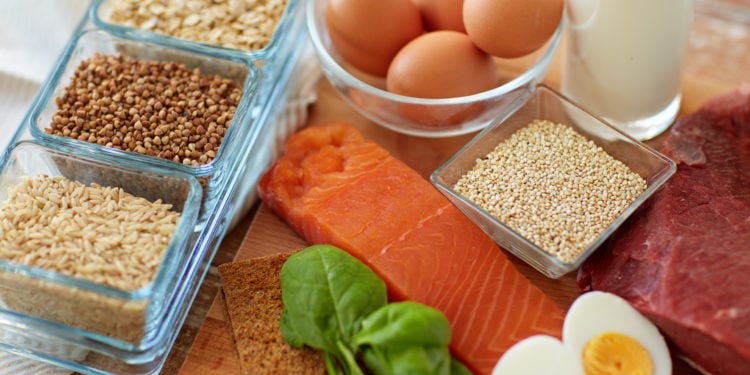0:00 簡介:不吃糖會發生什麼事?
0:10 #1 臉和腹部會改變
0:52 #2 改善眼睛、大腦、動脈和腎臟
4:19 #3 減少夜間排尿
5:00 #4 更多能量
6:35 #5 兩餐之間進食的渴望消失
8:57 #6 減少僵硬、疼痛和炎症
9:57 #7 你會減肥
11:32 #8 皮膚更好
11:50 #9 改善胰島素阻抗
柏格醫生 dr berg 談戒糖所產生的身體變化:
1. 臉部和腹部的變化
2. 改善眼睛、大腦、動脈和腎臟
3. 夜間排尿減少
4. 更有能量、 活力
5. 兩餐之間進食的渴望消失
6. 減少僵硬、疼痛和炎症
7. 減肥
8. 更好的皮膚
9. 改善胰島素阻抗
吃動物的飽和脂肪12大好處,柏格醫生:
▶️ ![]() • 吃動物的飽和脂肪12大好處,柏格醫...
data:
Changing how we see saturated fat — Diet Doctor
Saturated fat DOESN'T cause Diabetes - YouTube
糖對紅血球的破壞,讓你不敢再吃糖!柏格醫生 Dr Berg:
▶️
• 吃動物的飽和脂肪12大好處,柏格醫...
data:
Changing how we see saturated fat — Diet Doctor
Saturated fat DOESN'T cause Diabetes - YouTube
糖對紅血球的破壞,讓你不敢再吃糖!柏格醫生 Dr Berg:
▶️ ![]() • 糖對紅血球的破壞,讓你不敢再吃糖!...
吃太多糖7個警訊,預防糖尿病:
▶️
• 糖對紅血球的破壞,讓你不敢再吃糖!...
吃太多糖7個警訊,預防糖尿病:
▶️ ![]() • 吃太多糖7個警訊,預防糖尿病,柏格...
🌹台灣柏格醫生產品 https://ketogoods.com.tw/shop/
柏格醫生中文 健康知識:
生酮飲食入門(中文):
• 吃太多糖7個警訊,預防糖尿病,柏格...
🌹台灣柏格醫生產品 https://ketogoods.com.tw/shop/
柏格醫生中文 健康知識:
生酮飲食入門(中文): ![]() • (生酮入門1)生酮飲食加斷食, 燃...
第2步,吃的內容(中文):
• (生酮入門1)生酮飲食加斷食, 燃...
第2步,吃的內容(中文): ![]() • (生酮入門2), 第二步生酮飲食,...
斷食的方法(中文):
• (生酮入門2), 第二步生酮飲食,...
斷食的方法(中文): ![]() • (生酮入門1)生酮飲食加斷食, 燃...
斷食的體內變化(中文) :
• (生酮入門1)生酮飲食加斷食, 燃...
斷食的體內變化(中文) : ![]() • 斷食6.斷食體內變化:抗衰老、自噬...
柏格醫生臉書(中文): https://www.facebook.com/柏格醫生中文-健康知識-...
艾瑞克柏格(Dr Eric Berg)醫生介紹:
56歲,脊椎醫生, 他是弗吉尼亞州、加利福尼亞州和路易斯安那州的3州脊椎科醫生,執照一直維持有效。他是全球知名的健康生酮飲食和斷食專家,也是《新體型指南》和KB Publishing出版書作者。
他曾在霍華德大學(Howard University)擔任兼職教授,教授學生營養學。 近年忙碌於媒體教育,他無暇親自看病人。
柏格醫生商店: http://www.drberg.com/blog
聯繫柏格團隊:m.me/DrEricBerg
關於柏格醫生: http://www.drberg.com/dr-eric-berg/bio
免責聲明:
柏格醫生(Dr Eric Berg)1988年從帕爾默脊骨學院(Palmer College of Chiropractic )獲得脊骨醫學學位。 「Doctor」 或「DR」, 醫生僅指那個學位。 柏格醫生視頻僅供參考,不應用於自我診斷,也不能替代醫學檢查、治癒、治療、診斷、處方或建議。 本視頻不會在柏格醫生和觀眾之間建立醫患關係。 在您先諮詢醫生並獲得醫學檢查、診斷和建議之前,您不應該對健康習慣或飲食進行任何更改。 如果您醫療狀況有任何疑問,請務必諮詢醫生或其他合格的醫療服務提供者。 您從本視頻或網站得到的建議、治療過程、診斷或任何其他信息、服務或產品等,The Health&Wellness、Berg Nutritionals公司和艾瑞克柏格醫生概不負法律責任。
#不吃糖 #柏格醫生 #臉浮腫 #減肥 #脂肪 #胰島素阻抗 #燃燒脂肪 #生酮飲食 #間歇性斷食 #斷食 #柏格醫生中文 #胰島素 #肝功能 #新陳代謝 #膽結石 #腎結石 #腹部減肥 #糖尿病 #高血糖 #自然療法 #養生 #無糖 #低碳水 #高脂肪 #低脂肪 #代謝緩慢 #快速減肥 #健康減肥 #腹部脂肪 #高血壓 #高膽固醇 #膽固醇 #肝硬化 #脂肪肝 #生酮食譜 #甲狀腺 #更年期 #碳水化合物
• 斷食6.斷食體內變化:抗衰老、自噬...
柏格醫生臉書(中文): https://www.facebook.com/柏格醫生中文-健康知識-...
艾瑞克柏格(Dr Eric Berg)醫生介紹:
56歲,脊椎醫生, 他是弗吉尼亞州、加利福尼亞州和路易斯安那州的3州脊椎科醫生,執照一直維持有效。他是全球知名的健康生酮飲食和斷食專家,也是《新體型指南》和KB Publishing出版書作者。
他曾在霍華德大學(Howard University)擔任兼職教授,教授學生營養學。 近年忙碌於媒體教育,他無暇親自看病人。
柏格醫生商店: http://www.drberg.com/blog
聯繫柏格團隊:m.me/DrEricBerg
關於柏格醫生: http://www.drberg.com/dr-eric-berg/bio
免責聲明:
柏格醫生(Dr Eric Berg)1988年從帕爾默脊骨學院(Palmer College of Chiropractic )獲得脊骨醫學學位。 「Doctor」 或「DR」, 醫生僅指那個學位。 柏格醫生視頻僅供參考,不應用於自我診斷,也不能替代醫學檢查、治癒、治療、診斷、處方或建議。 本視頻不會在柏格醫生和觀眾之間建立醫患關係。 在您先諮詢醫生並獲得醫學檢查、診斷和建議之前,您不應該對健康習慣或飲食進行任何更改。 如果您醫療狀況有任何疑問,請務必諮詢醫生或其他合格的醫療服務提供者。 您從本視頻或網站得到的建議、治療過程、診斷或任何其他信息、服務或產品等,The Health&Wellness、Berg Nutritionals公司和艾瑞克柏格醫生概不負法律責任。
#不吃糖 #柏格醫生 #臉浮腫 #減肥 #脂肪 #胰島素阻抗 #燃燒脂肪 #生酮飲食 #間歇性斷食 #斷食 #柏格醫生中文 #胰島素 #肝功能 #新陳代謝 #膽結石 #腎結石 #腹部減肥 #糖尿病 #高血糖 #自然療法 #養生 #無糖 #低碳水 #高脂肪 #低脂肪 #代謝緩慢 #快速減肥 #健康減肥 #腹部脂肪 #高血壓 #高膽固醇 #膽固醇 #肝硬化 #脂肪肝 #生酮食譜 #甲狀腺 #更年期 #碳水化合物
I was WRONG about COFFEE_
;
Sore Knees? Do This Once Daily...
Boston, Massachusetts:
March 25, 2023
How do some folks stay active well into their 70's, 80's, and even 90's... enjoying all kinds of activities like hiking, gardening, and golfing...
...while others find themselves hobbling down stairs... or needing to rock back and forth just to get out of a chair?
Well, according to a new breakthrough discovery by Harvard University, scientists now know it comes down to a single mistake...
A mistake, that... when avoided, not only reverses joint discomfort and everyday aches... but can actually make joints healthier than they've been in years.
And here's the best part: avoiding this mistake is easy. There's just one problem...
Doing this defies common sense. In fact, it's so counterintuitive, a recent survey found that up to 77% of folks with sore joints are making this mistake every day because they think it's helping. When, in fact, it does just the opposite.
That's why when they stop making this mistake, their recovery can be quite dramatic.
To date, more than 180,547 people have tried this with life-changing results...
Ordinary folks who were once couch-bound are now walking a few miles per day again...
Others have resumed exercise classes they were once forced to give up.
And some have even started long-distance jogging after decades of sitting on the sidelines...
A Boston medical doctor recently recorded a short presentation which shows you this #1 mistake and why you should avoid it at all costs. His video quickly went viral, racking up more than seven million views. And thousands of folks around the country are singing the praises of this method across social media.
Karen Potter from Tremont, Pennsylvania said, "I can hardly believe it. I have been able to start back walking daily and I have not been able to do that in months and months."
Kay Gilbert from Athens, Alabama wrote, "I'm 73 and feel like running all over the place again. My kids say I outwalk them in Walmart."
And Robert Henninge from Castle Rock, Colorado exclaimed, "Back to walking the dog and hiking... 81 years old."
Now, what about you? Could your joints use some relief? How would you like to take back control of your life?
If so, click here to learn more about this mistake and put an end to those everyday aches stopping you from living your best life.
[WATCH NOW]
https://track.arthrozene.com/click
https://www.arthrozene.com/drsadvice_li.php?cep=1liLjDXFzAcl9woGt3fADcG3YvRpAuR4BrmpXULY38vnH7PVRfAr9osaPXn8EN7bYP68h437-N1d8AjXg6muu1yM2JLGsQR5WYAwnoM8b7cdblfn9UNf49NMfV4sX74-zNaN9_uoFkOMZ842jpQvjJeEt1UUazU8iaddXEI9chMmntyvS8qF1cCwAW5seRXrSbp-6OU5Q2Inxvfy_1U00vSg5mrmo2UEgHqwL4ezk82DINevDFVuH2QJH0CF2e0Tb4zoWMM4IeCeu1qvXEJOSgmIsaOqw2O09vMn41g0trrdrH9x_6KB2JEI42Bi76rRldInINuhcFNkBL-Kj_VMQM3zTsPocSg4ZDz42Fx6HQDSyWtmttzDwO-9uGScQY1ibpsQGIQIG0VgXBqM3iB_sh-TN4yAvdZZMLwt5ZKCGUTA_uuF8C-cyP5Ju8tQIV1EzD31ZKVXlXKk_9MG8wm0p1LW1FZX7UU4HRq6o3Bs1BNN5P7BcCI0wIbHZfj5oCnK&lptoken=1675805c0094955a3139&campaignid=313429&publisherid=55803&creativeid=1153898&templateid=29936&clickid=8930c05f-917b-3487-b1b2-e7c4aae23763&tid=li_313429_55803_1153898&li_did=8930c05f-917b-3487-b1b2-e7c4aae23763
























